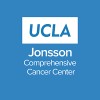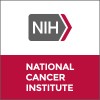
Topotecan in Treating Young Patients With Neoplastic Meningitis Due to Leukemia, Lymphoma, or Solid...
Brain and Central Nervous System TumorsCarcinoma of Unknown Primary4 moreRATIONALE: Drugs used in chemotherapy, such as topotecan, work in different ways to stop the growth of cancer cells, either by killing the cells or by stopping them from dividing. PURPOSE: This phase I trial is studying the side effects, best way to give, and best dose of topotecan when given by intraventricular infusion in treating young patients with neoplastic meningitis due to leukemia, lymphoma, or solid tumors.

Paclitaxel Plus Radiation Therapy in Treating Children With Newly Diagnosed Brain Stem Glioma
Brain and Central Nervous System TumorsRATIONALE: Drugs used in chemotherapy use different ways to stop tumor cells from dividing so they stop growing or die. Radiation therapy uses high-energy x-rays to damage tumor cells. Paclitaxel may make the tumor cells more sensitive to radiation therapy. PURPOSE: Phase I trial to study the effectiveness of combining paclitaxel with radiation therapy in treating children who have newly diagnosed brain stem glioma.

REGN2810 in Pediatric Patients With Relapsed, Refractory Solid, or Central Nervous System (CNS)...
Relapsed Solid TumorRefractory Solid Tumor4 morePhase 1: To confirm the safety and anticipated recommended phase 2 dose (RP2D) of REGN2810 (cemiplimab) for children with recurrent or refractory solid or Central Nervous System (CNS) tumors To characterize the pharmacokinetics (PK) of REGN2810 given in children with recurrent or refractory solid or CNS tumors Phase 2 (Efficacy Phase): To confirm the safety and anticipated RP2D of REGN2810 to be given concomitantly with conventionally fractionated or hypofractionated radiation among patients with newly diagnosed diffuse intrinsic pontine glioma (DIPG) To confirm the safety and anticipated RP2D of REGN2810 given concomitantly with conventionally fractionated or hypofractionated radiation among patients with newly diagnosed high-grade glioma (HGG) To confirm the safety and anticipated RP2D of REGN2810 given concomitantly with re-irradiation in patients with recurrent HGG To assess PK of REGN2810 in pediatric patients with newly diagnosed DIPG, newly diagnosed HGG, or recurrent HGG when given in combination with radiation To assess anti-tumor activity of REGN2810 in combination with radiation in improving overall survival at 12 months (OS12) among patients with newly diagnosed DIPG To assess anti-tumor activity of REGN2810 in combination with radiation in improving progression-free survival at 12 months (PFS12) among patients with newly diagnosed HGG To assess anti-tumor activity of REGN2810 in combination with radiation in improving overall survival at OS12 among patients with recurrent HGG

Palbociclib Isethionate in Treating Younger Patients With Recurrent, Progressive, or Refractory...
Childhood Choroid Plexus TumorChildhood Ependymoblastoma17 moreThis phase I trial studies the side effects and best dose of palbociclib isethionate in treating younger patients with central nervous system tumors that have grown, come back, or not responded to treatment. Palbociclib isethionate may stop the growth of tumor cells by blocking some of the enzymes needed for cell growth.

Phase I/II Bevacizumab Versus Bevacizumab Plus TPI 287 for Recurrent Glioblastoma
Brain NeoplasmsCentral Nervous System NeoplasmsThe goal of Part I of this clinical research study is to find the highest tolerable dose of TPI 287 that can be given with bevacizumab to patients with glioblastoma. The goal of Part II is to learn if TPI 287 when given with bevacizumab can help to control glioblastoma better than when bevacizumab is given alone. The safety of the drug combination will also be studied. TPI 287 is similar to a type of chemotherapy drug called a taxane and is designed to block a protein (tubulin) that helps the cancer cells divide. By blocking the tubulin, the drug may be able to cause the cancer cells to shrink or stop growing. Bevacizumab is designed to prevent or slow down the growth of cancer cells by blocking the growth of blood vessels.

Study of Lenalidomide With Vorinostat in Pediatric Patients With High Grade or Progressive CNS Tumors...
Central Nervous System TumorsIndependently, both lenalidomide and vorinostat have shown promising activity in pediatric central nervous system (CNS) tumors. These are both agents that are not typically part of first-line studies, although both agents are of serious interest and are currently in clinical trials for further investigation. This study is to evaluate the combination of lenalidomide and vorinostat in high grade or progressive central nervous system tumors in children.

Rosiglitazone in Treating Patients With Pituitary Tumors
Brain and Central Nervous System TumorsRATIONALE: Rosiglitazone may help pituitary adenoma cells become more like normal cells, and grow and spread more slowly. PURPOSE: This phase II trial is studying how well rosiglitazone works in treating patients with newly diagnosed or residual or recurrent pituitary adenoma.

O(6)-Benzylguanine and Temozolomide in Treating Patients With Glioblastoma Multiforme That Did Not...
Brain and Central Nervous System TumorsRATIONALE: Drugs used in chemotherapy, such as O(6)-benzylguanine and temozolomide, work in different ways to stop the growth of tumor cells, either by killing the cells or by stopping them from dividing. Giving more than one drug (combination chemotherapy) may kill more tumor cells. PURPOSE: This phase II trial is studying the side effects and how well giving O(6)-benzylguanine together with temozolomide works in treating patients with glioblastoma multiforme that did not respond to previous temozolomide and radiation therapy.

Nuclear Imaging of Human CSF Flow Using Ga-67 Citrate and In-111 DTPA
Central Nervous System TumorsBrain TumorsPrimary Objective will be to evaluate the use of Ga-67 citrate as an alternative radiopharmaceutical for CSF imaging. Secondary Objective will be to evaluate the biodistribution, pharmacokinetics and radiation dosimetry of In 111 DTPA and gallium-67 after intrathecal injection during remission of leptomeningeal metastasis (LM) and during LM occurrence, remission and recurrence.

Topotecan, G-CSF, and Radiation Therapy in Treating Young Patients With Newly Diagnosed Brain Stem...
Brain TumorsCentral Nervous System TumorsRATIONALE: Drugs used in chemotherapy, such as topotecan, work in different ways to stop the growth of tumor cells, either by killing the cells or by stopping them from dividing. Colony-stimulating factors, such as G-CSF, may increase the number of immune cells found in bone marrow or peripheral blood and may help the immune system recover from the side effects of chemotherapy. Radiation therapy uses high-energy x-rays to kill tumor cells. Topotecan may make tumor cells more sensitive to radiation therapy . Giving topotecan and G-CSF together with radiation therapy may be an effective treatment for brain stem glioma. PURPOSE: This phase I/II trial is studying the side effects and best dose of topotecan when given together with G-CSF and radiation therapy and to see how well they work in treating young patients with newly diagnosed brain stem glioma.
